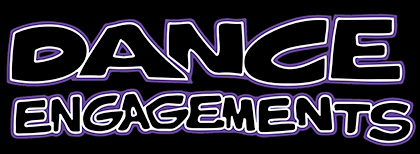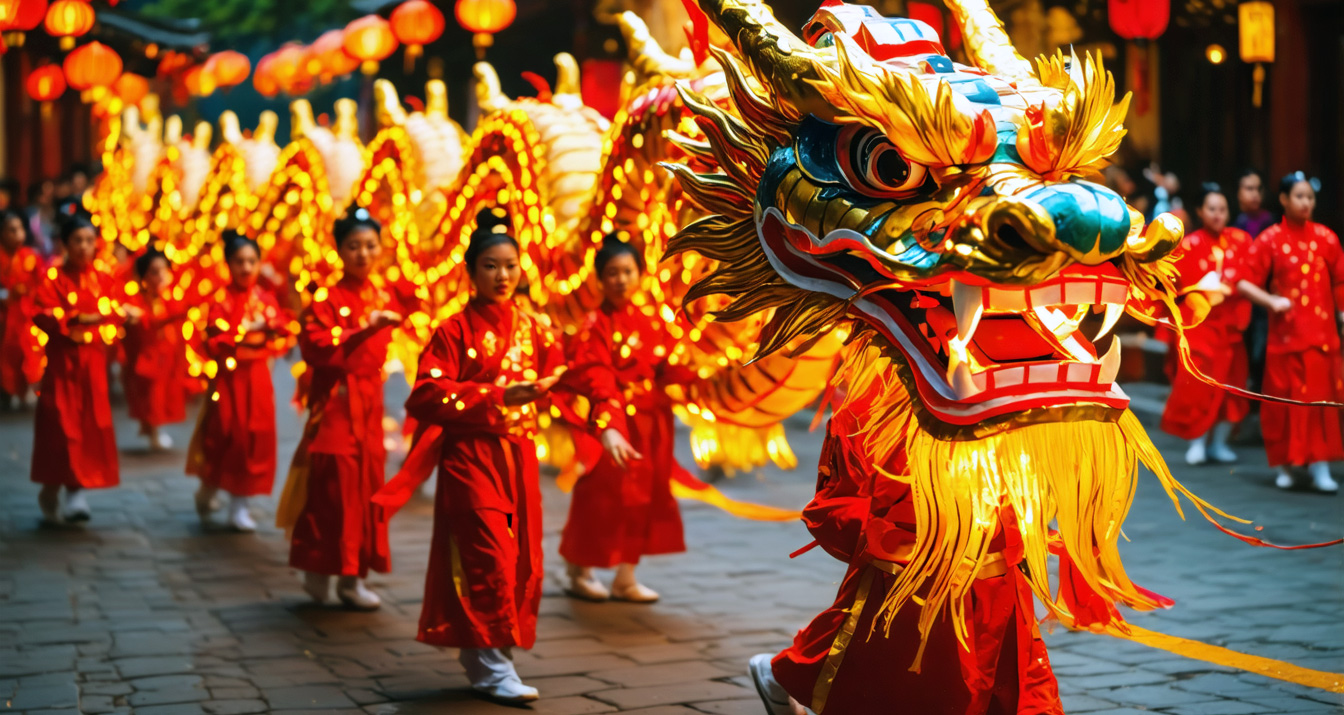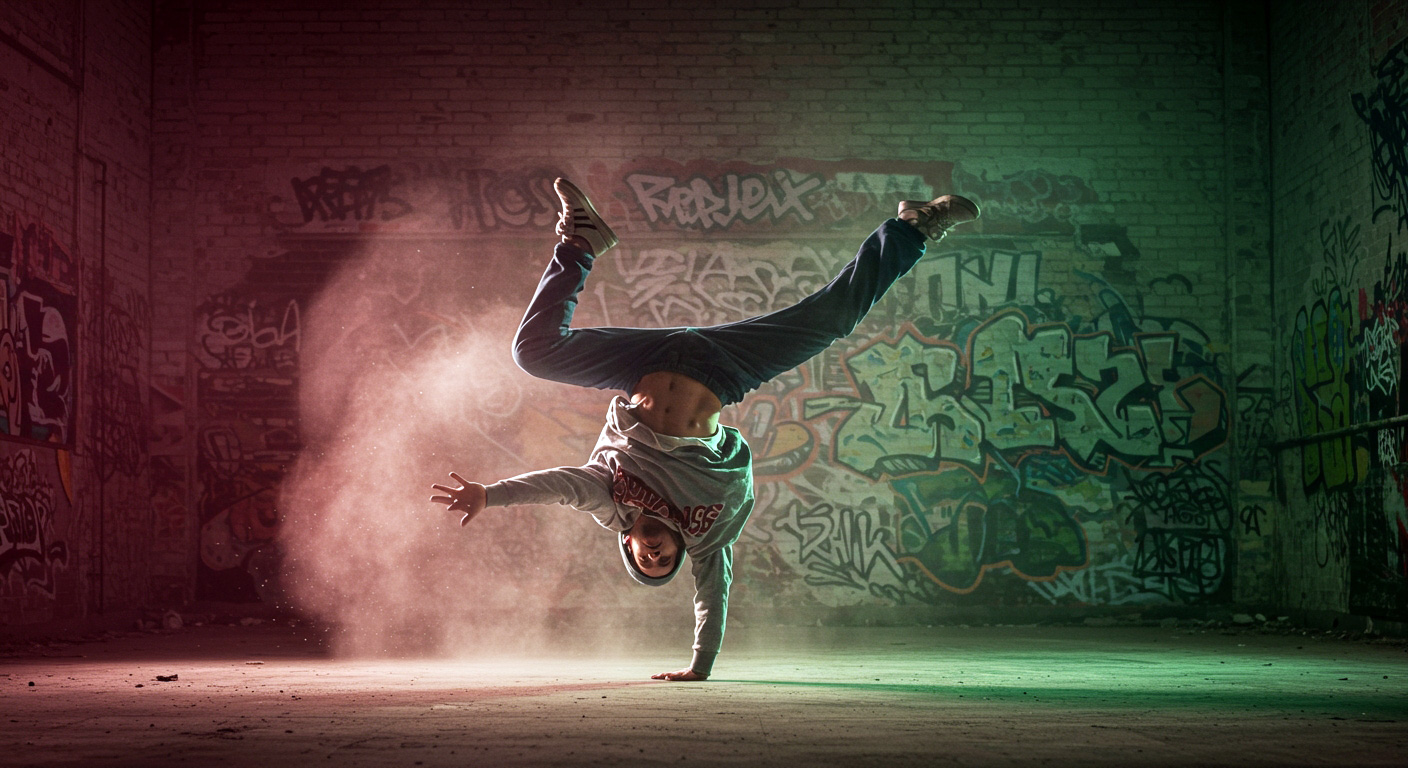By the Dance Engagements Editorial Team | Fact-checked by Cultural Dance Experts | Last Updated: August 2, 2025
Traditional dances represent one of humanity’s most beautiful and captivating art forms, transcending borders, languages, and cultures across every continent. As dance educators and cultural preservationists with decades of experience studying and teaching traditional dance forms, we’ve witnessed firsthand how these movements serve as living bridges between past and present, connecting communities across generations. From winding village streets in Europe to the lively plazas of South America, the pulse of human expression finds beautiful release through dance.
Every corner of the globe has added its own steps, stories, and spirit to this universal language, allowing both tradition and innovation to coexist in stunning harmony.
Traditional dances serve as powerful expressions of cultural identity, history, and values. These dances are not merely artistic performances; they are vital tools for preserving cultural heritage and fostering community cohesion. Dance is a beautiful and captivating art form that transcends borders, languages, and cultures. Across the globe, traditional dances provide a window into the soul of a culture. They tell stories, celebrate significant events, and honor traditions passed down through generations.
From the passionate Flamenco of Spain to the energetic Tinikling of the Philippines, each dance style offers a unique glimpse into the lives and customs of its people. From winding village streets in Europe to the lively plazas of South America, the pulse of human expression finds beautiful release through dance. Every corner of the globe has added its own steps, stories, and spirit to this universal language, allowing both tradition and innovation to coexist in stunning harmony. While the styles, costuming, and musical blends may appear drastically distinct, they all draw from the fundamental drive to connect, celebrate, and communicate without words.
Through these explorations, we will uncover how traditional dances not only entertain but also play a crucial role in maintaining cultural identity and strengthening community bonds. The sheer diversity of these living forms is staggering as we step onto a world stage and move through a host of countries and continents, each bringing something remarkable to the rhythm of humanity.
The Power of Movement in Human Storytelling
“Dance is the hidden language of the soul,” as Martha Graham famously said, and this truth resonates across every culture on Earth. Why do people dance? Sometimes it’s pure joy, sometimes sacred ritual, sometimes an act of resistance or unity. In many societies, children learn traditional dances before they fully master language, embedding physical storytelling in their earliest memories.
According to UNESCO’s Intangible Cultural Heritage documentation, traditional dances serve multiple functions beyond entertainment. They act as repositories of collective memory, methods of social cohesion, and vehicles for transmitting cultural values.
🕊️ Respect & Representation
Learning another community’s traditional dance is a privilege. Seek instruction from qualified cultural bearers, credit the source culture, and avoid costume appropriation without permission. You can find free guidelines on ethical engagement at DanceEngagements.org.
Throughout history, emperors, shamans, rebels, and farmers have moved together in circles, lines, and pairs—often in patterns designed centuries earlier.
Dance is a living, breathing expression of identity. For communities scattered by migration or war, keeping their steps alive often becomes an act of preserving roots and resistance to being erased. Yet, dance is just as often an invitation to others—a symbol of hospitality, courtship, or even spiritual ecstasy.
Europe: From Passionate Flamenco to Elegant Waltzes
Europe spins across a vast spectrum, from fiery solo performances in Spain to communal circle dances in the Balkans and the precise elegance of ballroom traditions.
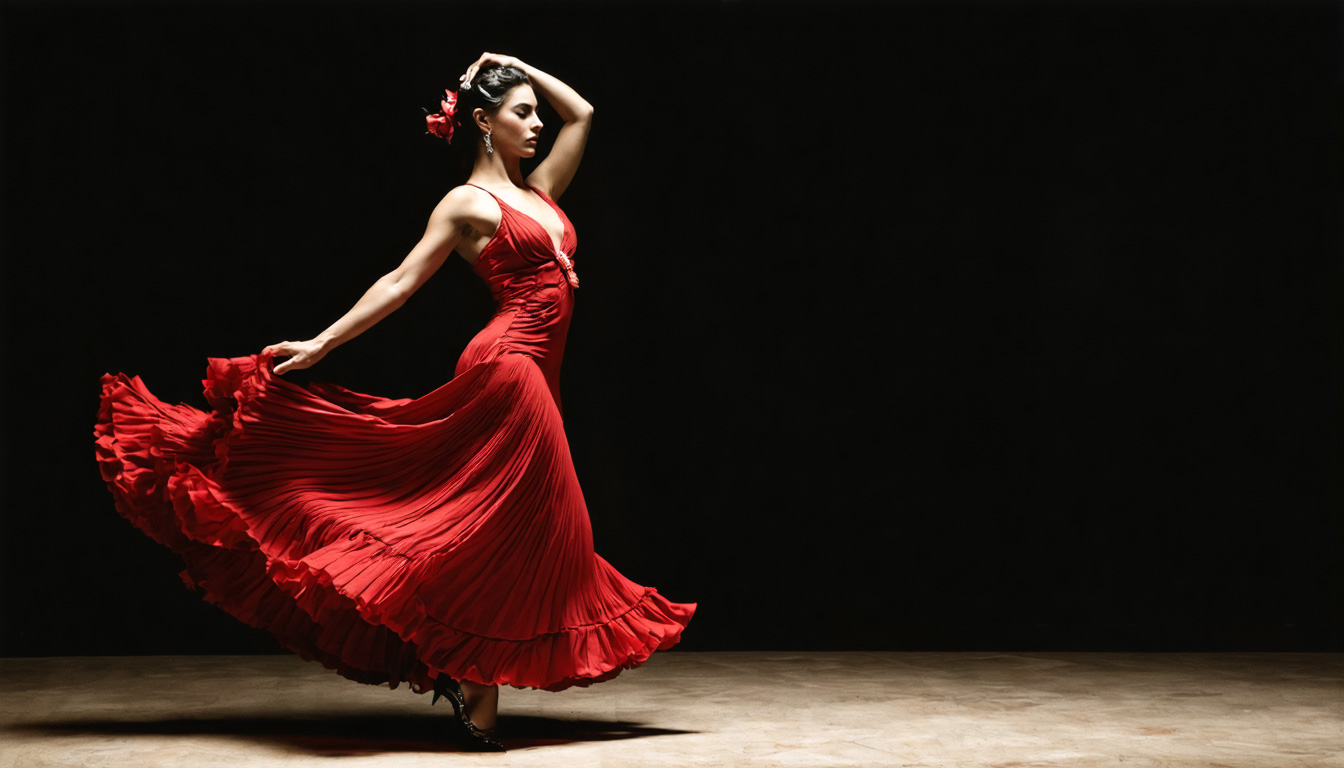
Flamenco (Spain)
Flamenco is one of Spain’s most famous cultural exports, originating in Andalusia, where centuries of history and migration have influenced its development. As noted by renowned flamenco historian Donn Pohren, “Flamenco is not just a dance, but a way of life that encompasses the deepest emotions of the human experience.”
The dance draws inspiration from the rich heritage of the Roma (Gypsy) people, combining their expressive traditions with Moorish, Jewish, and indigenous Andalusian influences. This cultural fusion, recognized by UNESCO as a Masterpiece of Oral and Intangible Heritage of Humanity in 2010, gives Flamenco its unique intensity and depth. This dynamic blend creates an art form that tells stories and releases emotions, transforming each performance into a powerful means of communication.
Key elements that define Flamenco’s character:
- Cante (Singing): The raw, emotional vocals tell stories of love, sorrow, and resilience. Each lyric is delivered with heartfelt passion, carrying the weight of generations.
- Toque (Guitar Playing): The Spanish guitar provides a rhythmic and melodic foundation, weaving intricate patterns that guide both singer and dancer through the emotional journey
- Palmas (Hand-Clapping) & Pitos (Finger-Snapping): Percussive clapping and snapping inject energy, driving the tempo and reinforcing dramatic moments throughout the performance
- Baile (Dance): Dancers use precise footwork, expressive arm movements, and proud posture to embody the mood of each song, channeling intense emotional states
Flamenco is more than just a performance; it’s an art form where every movement expresses personal or collective experiences—grief, joy, defiance—transforming each dance into a powerful means of communication. Flamenco channels intense emotional states—sorrow, defiance, joy—through rapid footwork, passionate arm movements, and the distinctive use of castanets. Guitarists, singers, and dancers unite to create a dramatic, soulful experience that resonates with audiences worldwide.
When you watch a Flamenco show in Andalusia’s tablaos or city plazas, you witness not only skill but also living history, resonating with the voices of past generations and connecting modern audiences to centuries of cultural expression.
Waltz (Austria)
The Waltz originated in Austria during the 18th century and quickly became popular among both the upper class and regular people. This influential ballroom dance style is characterized by:
- Rotational Movement: Dancers move in smooth, continuous rotary motion while maintaining a close embrace
- 3/4 Time Signature: The music’s distinct “ONE-two-three” beat defines the dance’s gentle rise-and-fall motion
- Box Step Foundation: The basic pattern forms a square-shaped movement on the floor
The Waltz remains a centerpiece at formal events and international ballroom competitions, continuing to enchant new generations with its timeless sophistication.
Can-can (France)
The Can-can burst onto the Parisian nightlife scene in the early 19th century, becoming a signature act in France’s vibrant cabaret culture. This raucous, often cheeky dance relies on well-choreographed kicks, splits, and high energy. Key elements include:
- High-energy choreography featuring synchronized kicks and acrobatics
- Lively orchestral music, typically a gallop or quick-tempo march
- Iconic costumes with long ruffled skirts, petticoats, and black stockings
The Moulin Rouge elevated the Can-can’s status from risqué amusement to a celebrated symbol of Parisian culture.
Barynya (Russia)
Barynya, a traditional Russian folk dance, showcases the rich cultural heritage of Russia through vigorous stomping, squatting, and elaborate footwork. This captivating dance features:
- Fast-paced, rhythmic music often accompanied by balalaika and accordion
- Energetic movements, including jumping and complex footwork patterns
- Deep roots in Russian peasant culture as communal entertainment
Barynya plays a significant role at weddings and festivals, symbolizing joy and celebration while preserving Russian cultural identity.
Irish Stepdance (Ireland)
Irish Stepdance gained global recognition through spectacular shows like Riverdance and Lord of the Dance, but its roots stretch back centuries in Irish cultural tradition. This distinctive dance form is characterized by:
- Rigid Upper Body: Dancers maintain a straight, controlled posture from the waist up
- Intricate Footwork: Complex, rapid steps performed with precision and rhythm
- Hard and Soft Shoe Styles: Hard shoes create percussive sounds, while soft shoes allow for graceful, silent movements
- Competitive Tradition: Feiseanna (competitions) preserve and promote traditional techniques
Irish Stepdance serves as a powerful symbol of national pride both in Ireland and throughout its diaspora, connecting Irish communities worldwide through shared cultural expression.
Greek Syrtaki (Greece)
Made famous by the film “Zorba the Greek,” Syrtaki represents the spirit of Greek celebration and community. This line dance combines elements from traditional Greek folk dances:
- Progressive Tempo: Begins slowly and gradually increases in speed and intensity
- Linked Arms: Dancers form a line with arms around shoulders, creating unity
- Simple to Complex Steps: Starts with basic steps that become more elaborate
- Cultural Symbol: Represents Greek resilience, joy, and communal spirit
Syrtaki embodies the Greek concept of “kefi” – a state of joyful celebration that brings people together in shared happiness.
Russian Ballet
While ballet has roots in the French courts, Russia redefined the art with innovation, technical mastery, and legendary dancers like Anna Pavlova and Rudolf Nureyev:
- Technical Innovation: Russian schools developed advanced techniques and training methods
- Artistic Excellence: Productions like Swan Lake and The Nutcracker became global standards
- Legendary Performers: Produced some of history’s most celebrated dancers and choreographers
- Cultural Institution: Ballet became central to Russian cultural identity and artistic expression
Russian ballet blends rigorous technique, sweeping music, and storytelling into performances that have captivated audiences by transmitting cultural values. It has audiences and influenced dance worldwide.
Polish Polonaise and Mazurka
These traditional Polish dances, originally performed by nobility, showcase the elegance and spirit of Polish culture:
Polonaise
- Stately Procession: Features dignified, processional steps befitting royal courts
- Noble Heritage: Originally danced by the Polish aristocracy and royalty
- Musical Integration: Often included in classical music compositions by Chopin and others
- Ceremonial Function: Used for formal occasions and state celebrations
Mazurka
- Lively Triple Time: Energetic dance in 3/4 time with distinctive rhythmic patterns
- Folk Origins: Rooted in Polish peasant traditions before court adoption
- Regional Variations: Different styles developed across various Polish regions
- Cultural Symbol: Represents Polish national identity and resistance
Today, these dances remain mainstays at major celebrations and continue to influence classical music and choreography.
Bulgarian and Romanian Hora
The Hora represents one of Eastern Europe’s most beloved communal dance traditions:
- Circle Formation: Dancers hold hands and move in intricate, repeating patterns
- Community Bonding: Creates connection and shared identity among participants
- Wedding Tradition: Often serves as the centerpiece of wedding celebrations
- Regional Variations: Different steps and rhythms exist across Bulgaria and Romania
These dances build connection and shared identity, turning celebrations into powerful expressions of community unity and cultural continuity.
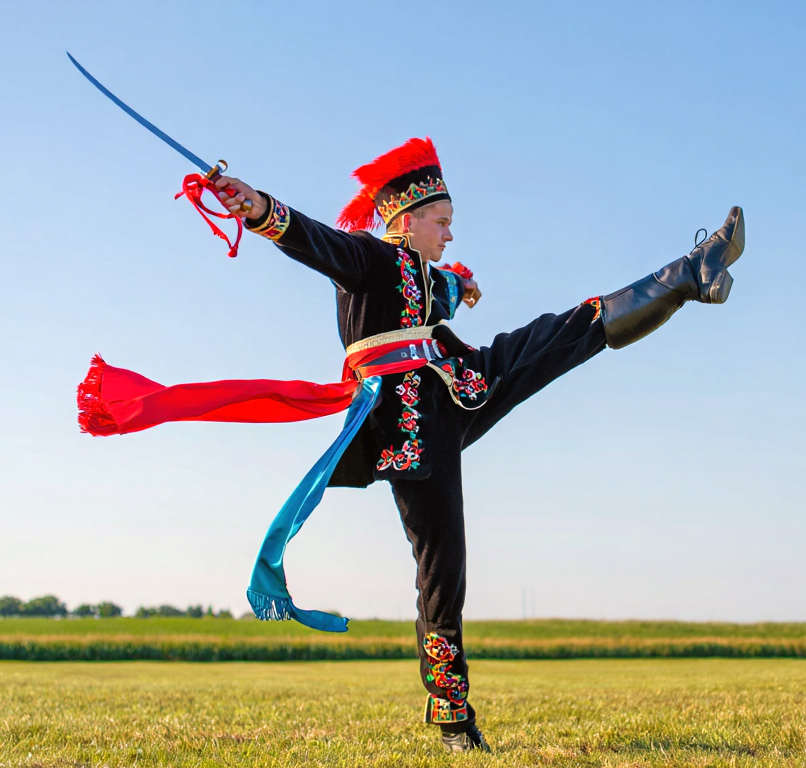
Hopak (Ukraine)
Called the “Cossack dance,” Hopak unleashes acrobatic knee spins, high kicks, and saber flourishes once performed to celebrate battlefield victories. Women’s graceful turns offset men’s athletic feats, together symbolizing Ukrainian resilience and national pride.
Aurresku (Basque Country)
Accompanied by the three-holed txistu flute and a hand drum, a lone dancer performs toe taps, knee-high kicks, and solemn bows in front of honored guests. The Aurresku is a ceremonial welcome that embodies Basque respect and communal spirit.
Halling (Norway)
Honed in Norway’s mountain valleys, Halling tests agility as male dancers leap to kick a hat off a stick held above their heads while fiddles play brisk 6⁄8 tunes. The feat-filled routine doubles as both a courtship display and a friendly contest of strength.
Asia: Rituals, Stories, and Stunning Detail
Across Asia, dance forms frequently blur the lines between theater, ritual, and spectacle. Lavish costumes, symbolic gestures, and centuries-old narratives come together in unforgettable fashion.
Dragon Dance (China)
The Dragon Dance is an iconic performance deeply rooted in Chinese culture, often showcased during Chinese New Year celebrations. This tradition embodies profound symbolism:
- Symbolism: Believed to bring good luck and ward off evil spirits, dragons represent power, strength, and prosperity
- Performance: Performers manipulate a long dragon figure made of cloth and bamboo poles, creating fluid motions
- Costumes: Vibrant colors like red, gold, and green symbolize happiness, wealth, and growth
The dragon’s movements are synchronized with rhythmic drums and cymbals, creating a captivating spectacle that connects modern celebrations to ancient traditions.
Chinese Classical Dance
Spanning 5,000 years of history, Chinese Classical Dance represents one of the world’s most comprehensive dance systems. This tradition draws from martial arts, acrobatics, and opera:
- Martial Arts Integration: Movements incorporate techniques from traditional Chinese martial arts
- Acrobatic Elements: Features impressive jumps, flips, and aerial techniques
- Opera Influence: Borrows theatrical elements from Chinese opera traditions
- Historical Narratives: Often tell stories from ancient legends and historical events
Movements can be strong and majestic or gentle and elegant, creating a dynamic range of expression that captures both earthly power and celestial grace.
Lion Dance (China)
The Lion Dance, typically seen at festivals alongside the Dragon Dance, blends athleticism and costumed pageantry to ward off evil and summon good fortune:
- Acrobatic Performance: Requires exceptional physical coordination between two performers
- Symbolic Protection: Believed to drive away evil spirits and bring prosperity
- Festival Tradition: Essential element of the Chinese New Year and other celebrations
- Regional Variations: Different styles exist across various Chinese regions
The Lion Dance combines martial arts techniques with theatrical performance, creating a dynamic spectacle that embodies strength, courage, and good fortune.
Kathakali (India)
Kathakali is one of India’s most visually striking classical dance-dramas, originating in Kerala. This art form brings ancient Hindu epics to life through:
- Mudras: Intricate hand gestures and facial expressions that communicate dialogue and emotion
- Storytelling: Complex narratives from the Mahabharata and Ramayana told without words
- Costumes and Makeup: Highly symbolic designs with vibrant silk skirts and elaborate headdresses
Every Kathakali performance revolves around the ability to convey complex stories through movement, with dancers undergoing years of rigorous training.
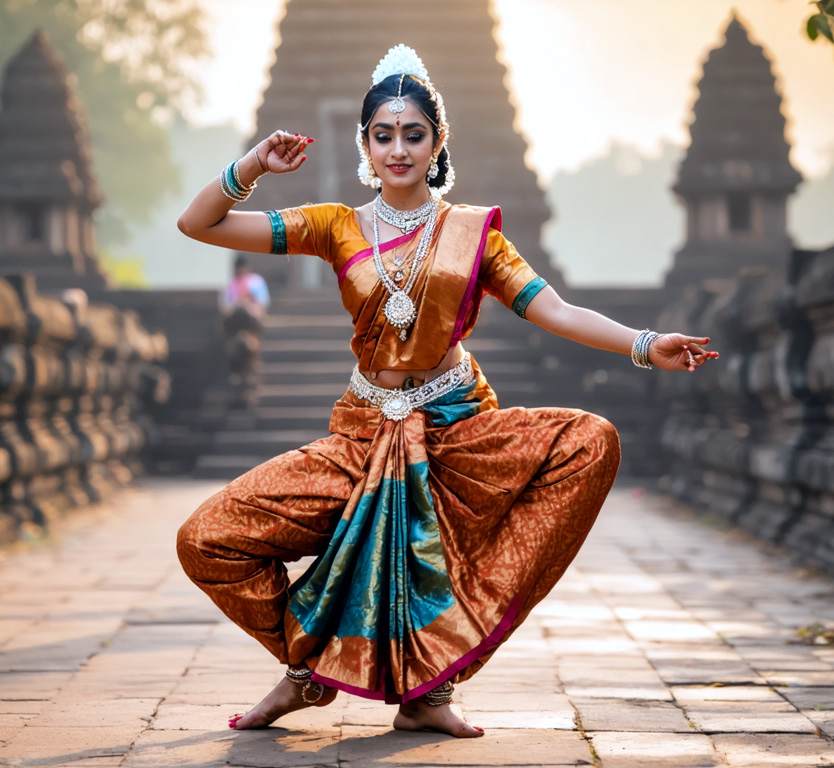
Bharatanatyam (India)
Bharatanatyam is one of India’s oldest and most revered classical dance forms, originating over 2,000 years ago in the temples of Tamil Nadu. This sacred art form combines:
- Nritta: Pure dance movements focusing on rhythm and technique
- Nritya: Expressive dance that conveys emotions and stories
- Natya: Dramatic elements including acting and storytelling
- Spiritual Connection: Originally performed as devotional offerings to deities
The dance features precise geometric patterns, intricate hand gestures (mudras), and elaborate facial expressions. Bharatanatyam dancers undergo decades of training to master the complex vocabulary of movements that can express everything from divine love to cosmic principles.
Kathak (North India)
Kathak, once performed in both Mughal courts and Hindu temples, represents the rich cultural synthesis of North India. This classical dance form is distinguished by:
- Rapid Spins: Spectacular pirouettes (chakkars) that can continue for extended periods
- Expressive Storytelling: Narrative dance sequences that bring ancient tales to life
- Impressive Footwork: Complex rhythmic patterns often accompanied by over one hundred ankle bells
- Court Heritage: Refined in Mughal courts, blending Persian and Indian influences
Kathak dancers master the art of abhinaya (expression) to portray gods, lovers, and heroes through subtle facial expressions and graceful hand movements.
Manipuri (Northeast India)
Manipuri dance, originating from Northeast India, offers a gentler approach to classical Indian dance:
- Floating Movements: Gentle, flowing choreography that emphasizes grace over power
- Swirling Costumes: Traditional dress creates beautiful visual patterns during performance
- Krishna Stories: Often recounts scenes from the life of Lord Krishna and Radha
- Fluid Emphasis: Prioritizes smooth, continuous movement over the percussive elements found in other Indian forms
This dance form represents the devotional aspect of Indian classical tradition, creating an atmosphere of spiritual serenity and divine love.
Japanese Kabuki Dance (Japan)
Kabuki represents one of Japan’s most distinctive theatrical dance forms, combining drama, music, and elaborate choreography. Key characteristics include:
- Stylized Movements: Highly formalized gestures and poses called “kata”
- Elaborate Makeup: Distinctive face painting (kumadori) that indicates character types
- Costume Artistry: Magnificent silk costumes with symbolic colors and patterns
- Male Performers: Traditionally performed entirely by male actors (onnagata for female roles)
Kabuki dance sequences often depict historical events, moral conflicts, and supernatural tales, creating a mesmerizing spectacle that has captivated audiences for over 400 years.
Japanese Noh Dance
Noh represents Japan’s oldest major theatrical art form, using restrained gestures and slow movements to create profound dramatic impact:
- Restrained Movement: Subtle, controlled gestures that convey deep emotional states
- Carved Masks: Dancers wear traditional masks to transform into gods, spirits, and historical figures
- Slow Tempo: Deliberate pacing that builds psychological tension and spiritual atmosphere
- Spiritual Themes: Often explores themes of death, the supernatural, and human suffering
Noh offers a stark contrast to Kabuki’s vibrancy, creating an introspective, almost meditative theatrical experience that has influenced Japanese aesthetics for centuries.
Korean Buchaechum – Fan Dance (Korea)
Korean Fan Dance features dancers clad in brilliant hanbok costumes who use fans to conjure images of blossoming flowers, butterflies, and waves:
- Fan Choreography: Elaborate movements with traditional fans create visual poetry
- Hanbok Costumes: Brilliant traditional Korean dress enhances the visual spectacle
- Natural Imagery: Movements evoke flowers, butterflies, and flowing water
- Festival Tradition: A staple during festive holidays, symbolizing grace and beauty
This performance represents the refined elegance of Korean court culture while celebrating the natural beauty that inspires much of Korean art.
Thai Khon Dance
Thai Khon is performed mostly by men in lavish costumes and gilded masks, portraying episodes from the Ramakien, Thailand’s version of the Indian Ramayana tale:
- Elaborate Costumes: Magnificent traditional Thai dress with intricate details
- Gilded Masks: Golden masks that identify different character types and roles
- Formalized Movement: Strict, deeply symbolic choreography with precise meaning
- Epic Storytelling: Depicts scenes from Thailand’s national epic literature
Movements are formalized, strict, and deeply symbolic, creating a mesmerizing visual pageant that preserves Thailand’s cultural heritage through dance.
Balinese Legong (Indonesia)
Female dancers in ornate costumes perform with extraordinary precision, their eyes, fingers, and toes telling intricate stories drawn from ancient epics. Every movement has significance; even a blink or a tilt of the head is carefully choreographed.
Apsara Ballet (Cambodia)
Inspired by the celestial nymphs carved on Angkor Wat, Apsara dancers glide with hyper-extended fingers, serene smiles, and exquisitely slow gestures that retell Khmer creation myths and royal court lore. Every hand position is codified, symbolising mountains, rivers, and heavenly flowers in a living link to Cambodia’s golden era.
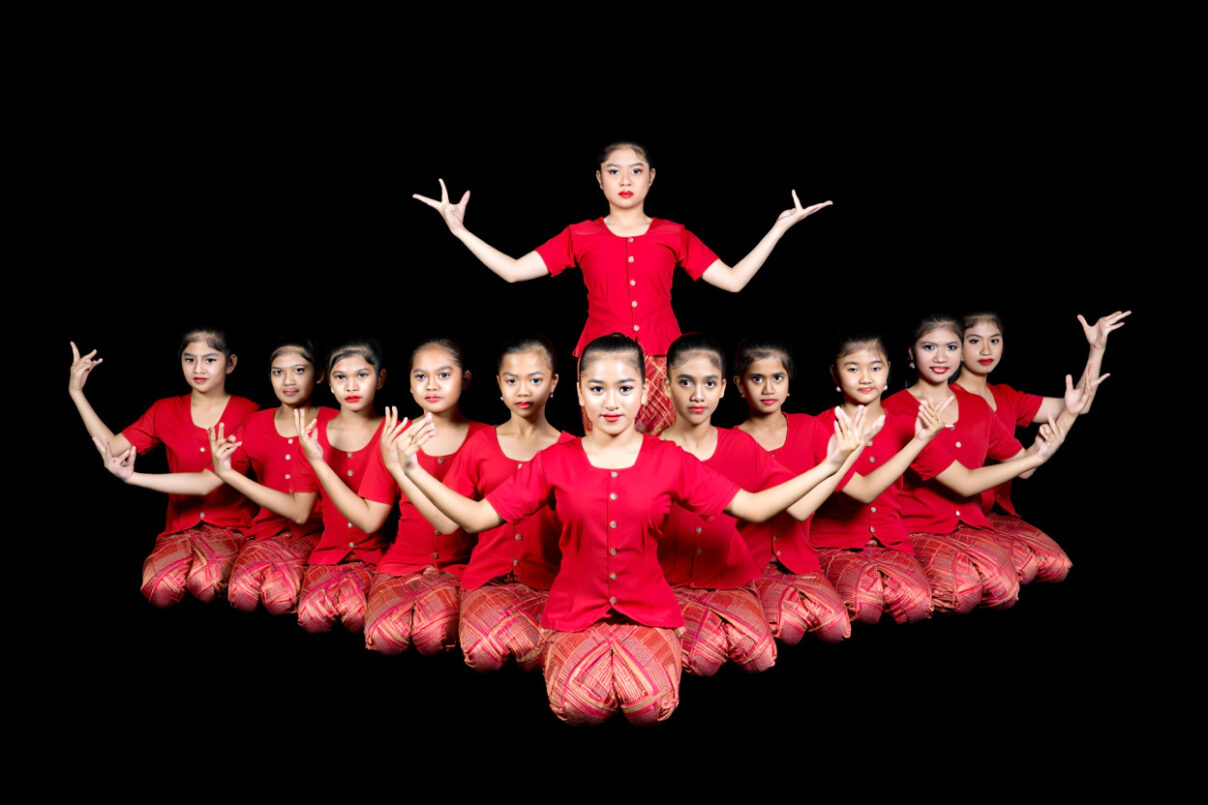
Saman – “Dance of a Thousand Hands” (Indonesia)
Acehnese performers sit shoulder-to-shoulder, clapping, chest-slapping, and weaving their arms at breathtaking speed while chanting Quranic verses. The totally synchronous movement celebrates Islamic scholarship and community unity, turning the human body into a mesmerising rhythmic instrument.
Attan (Afghanistan)
Regarded as Afghanistan’s national dance, Attan gathers dancers into ever-tightening circles that spin faster with each verse of dhol drum and surnai flute. Scarves whirl overhead, feet stamp in complex patterns, and the group only stops when the leader signals—an exhilarating test of stamina and tribal solidarity.
Kandyan Dance (Sri Lanka)
Originating in hill-country temple processions, Kandyan dancers leap and back-flip in ornate ves headdresses, their torso isolations mirroring the drumming of the geta bera. Movements honour Sinhalese kings and Hindu deities, blending athletic spectacle with devotional ritual that still electrifies Sri Lanka’s Esala Perahera festival each year.
Africa: The Expressive Spirit of Community
Africa’s dances pulse with history, communal ties, and profound spiritual meaning. Rhythm isn’t just a musical backing but a way of speaking—a dialogue between drummer and dancer, village and ancestors.
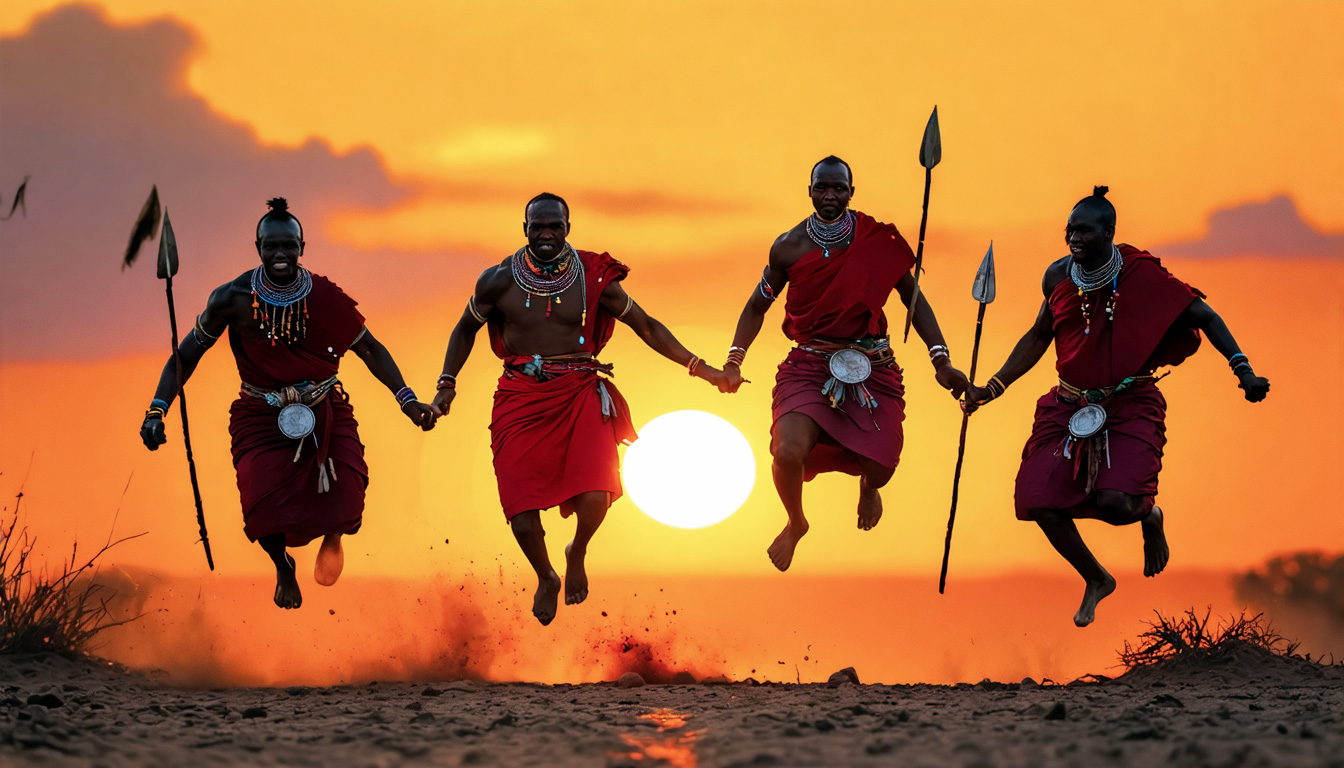
Adumu – The Jumping Dance (Kenya/Tanzania)
Adumu, often called the “jumping dance,” is a distinctive ritual performed by Maasai warriors in Kenya and Tanzania. This ceremony stands out for its powerful leaps, where young men gather in a semi-circle as one or two step forward to spring straight into the air without bending their knees. Each jump is observed by peers and elders, who sing rhythmic chants that build intensity with every leap.
Ritual Significance
Adumu is not just a display of athleticism; it serves as a pivotal rite of passage for Maasai boys transitioning into adulthood. Participation marks the journey from boyhood to warrior status, known as a moran. The ability to jump higher than others is seen as a sign of physical strength and endurance—qualities highly prized within Maasai society.
Cultural Role and Community Bonding
The dance reinforces community bonds and showcases group unity. Warriors often don their signature red shukas and intricate beadwork and carry traditional staffs. Singing and synchronized movements create an atmosphere charged with pride and anticipation. The occasion draws the entire village, turning Adumu into both a celebration and an affirmation of cultural heritage.
As cultural anthropologists note, “For the Maasai, Adumu is more than a dance—it’s an emblem of identity, bridging generations through movement and song.” Witnessing Adumu gives insight into how traditional dances function as living rituals—preserving values, transmitting history, and shaping social roles within the community.
Key characteristics include:
- Rite of Passage: Marks the transition from boyhood to warrior status (moran)
- Physical Display: Higher jumps demonstrate strength and endurance valued in Maasai society
- Community Bonding: Reinforces group unity and cultural heritage
- Rhythmic Chants: Elders and peers sing songs that build intensity with each leap
- Cultural Identity: Serves as a powerful expression of Maasai heritage and values
Warriors don their signature red shukas and intricate beadwork while the entire village participates in this celebration of identity.
West African Traditions
The Djembe drum is central to many West African dance traditions. The energetic Sabar dance from Senegal features quick, acrobatic movements and vibrant call-and-response with drummers. In Guinea and Mali, the Dundunba is danced by the strongest men in the village, with intensely athletic footwork reflecting challenges and celebration.
Sabar Dance (Senegal)
Quick, acrobatic movements drive the Sabar dance from Senegal and create a vibrant call-and-response dialogue with drummers. Key characteristics include:
- Athletic Movements: Quick, acrobatic choreography requiring agility and strength
- Call-and-Response: Dynamic interaction between dancers and Djembe drummers
- Community Participation: Encourages audience involvement and collective celebration
- Cultural Expression: Reflects Senegalese values of community, rhythm, and artistic expression
This energetic dance form showcases the athletic prowess and rhythmic sophistication that characterizes much of West African dance tradition.
Dundunba (Guinea/Mali)
In Guinea and Mali, the Dundunba is traditionally danced by the strongest men in the village, featuring intensely athletic footwork that reflects challenges, warfare, or celebration:
- Physical Strength: Performed by the most physically capable men in the community
- Athletic Footwork: Intensely demanding movements requiring exceptional stamina
- Cultural Themes: Movements reflect historical challenges, warfare, and community celebrations
- Village Tradition: Serves as a display of masculine strength and community pride
The Dundunba represents the warrior spirit and physical excellence valued in traditional West African societies.
Gumboot Dance (South Africa)
In South Africa, the Gumboot dance sprang up in oppressive gold mines. Workers, forbidden to speak, developed a rich vocabulary of stomps, slaps, and clicks with their rubber boots. This unique language became a powerful alternative to words, combining entertainment with subtle protest.
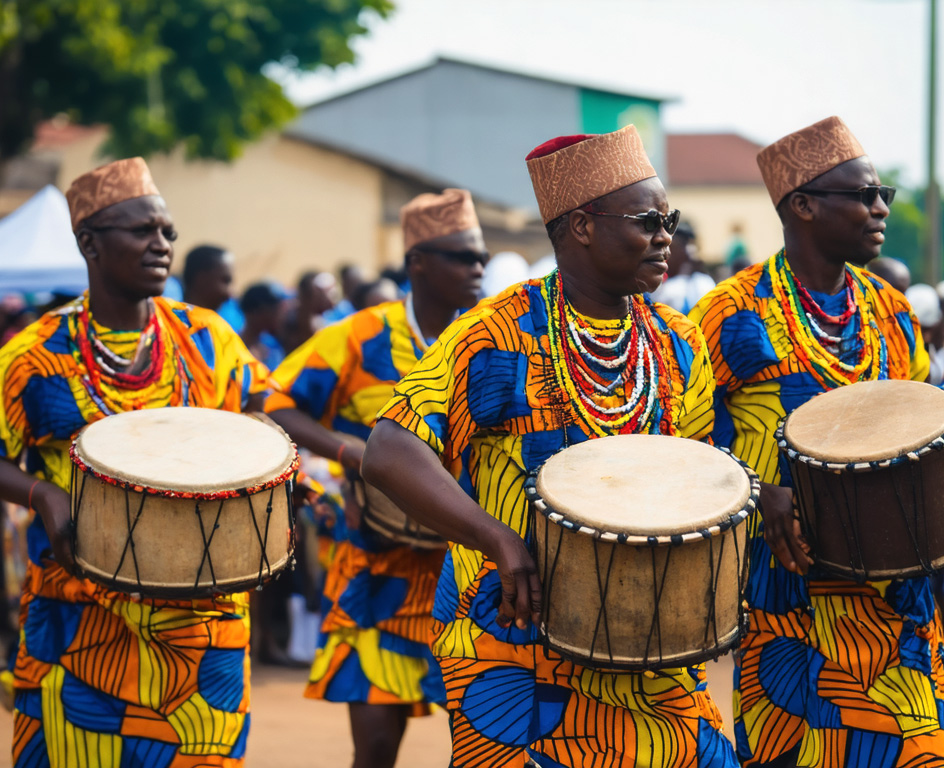
Bata — Talking-Drum Dance (Nigeria)
Among the Yorùbá of southwestern Nigeria, Bata dancers converse with double-headed talking drums whose tones mimic human speech. Footwork mirrors each drum phrase, praising the thunder deity Shango while shoulders shake in sharp counter-rhythms. The result is an electrifying dialogue of movement, music, and living language.
Ahidous (Morocco)
Under moonlit Atlas skies, Amazigh (Berber) men and women link shoulders in a close semi-circle, swaying torsos as they chant polyphonic poetry about harvest, love, and tribal history. Subtle shoulder shivers and handclaps keep time, turning Ahidous into both a social gathering and storytelling ritual that has bound mountain communities for centuries.
Middle East and North Africa: Drama, Rhythm, and Tradition
From Egypt’s pharaonic past to the palaces of Istanbul, the dances across North Africa and the Middle East pulse with history and cultural significance.
Raqs Sharqi – Belly Dance (Egypt)
Raqs Sharqi, commonly known as belly dancing, has a rich history tracing back to ancient Egypt. Originally performed as a fertility ritual, this dance evolved significantly over centuries:
- Fluid Hip Movements: Smooth and controlled movements that often narrate stories or express emotions
- Intricate Torso Isolations: Remarkable control creating mesmerizing patterns and rhythms
- Traditional Costumes: Often include coin belts and flowing skirts that accentuate movement
Whether performed at weddings or public festivals, Raqs Sharqi remains a vital part of Egyptian cultural heritage.
Ardha – The Sword Dance (Saudi Arabia)
Ardha is a captivating sword dance that holds a significant place in Saudi heritage. Traditionally performed by groups of men in flowing robes, it features:
- Swords held high: Representing strength and readiness, reflecting warrior legacy
- Chanted poetry: Recited lines praising bravery, unity, and historical achievements
- Coordinated movement: Dancers moving in harmony, symbolizing solidarity
Ardha embodies essential values of strength, bravery, and unity, serving as a powerful expression of pride in Saudi heritage.
Turkish Folk Dances
Turkey’s rich dance heritage spans from energetic halay circles in Eastern Anatolia to Istanbul’s urbane Romani-inspired rhythms:
Halay (Eastern Turkey)
- Circle Formation: Energetic group dance performed in linked circles
- Regional Identity: Represents the cultural traditions of Eastern Anatolia
- Community Celebration: Central to weddings and cultural festivals
- Rhythmic Complexity: Features intricate step patterns and musical timing
Urban Turkish Dances
- Romani Influence: Istanbul’s dances show Romani cultural integration
- 9/8 Rhythms: Complex time signatures that challenge dancers and musicians
- Regional Variations: Each Turkish region boasts unique costumes and step patterns
- Social Meaning: Many dances center on communal celebration and hospitality
Turkish folk dances reflect the country’s position as a cultural crossroads, blending influences from Europe, Asia, and the Middle East into distinctive regional traditions.
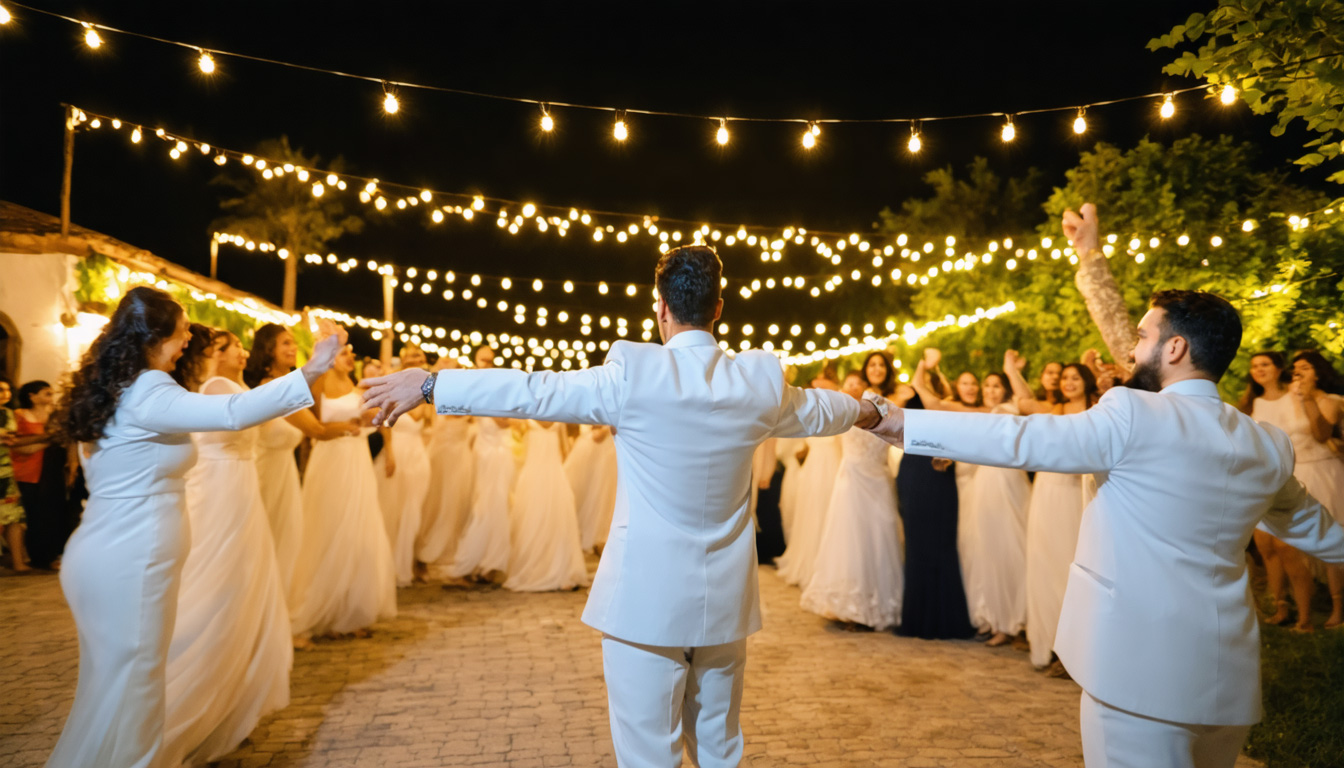
Dabke (Levant)
Hands locked and shoulders tight, dancers stamp intricate heel-toe patterns that echo communal labor and wedding celebrations across Lebanon, Syria, Jordan, and Palestine. The line is led by a raas who improvises flashy kicks while the group answers in unison—an enduring symbol of solidarity and joy in the Levant.
Mevlevi Sema Ceremony — Whirling Dervishes (Türkiye)
Dressed in white robes and tall camel-hair hats, Sufi semazens spin counter-clockwise with palms heaven- and earth-ward, seeking spiritual union through motion. Slow orchestral ney flutes and frame drums guide the ceremony, transforming the body into a living prayer inspired by the 13th-century poet Rumi.
Khaleegy Hair Dance (Arabian Gulf)
Celebrated at Gulf weddings, Khaleegy features women in flowing embroidered thob dresses who sway their hips gently while tossing long hair in waves that mimic the sea. Performed to upbeat 6/8 sawt rhythms, the dance is both feminine storytelling and social revelry that honours pearl-diving heritage and coastal life.
The Americas: Syncopation, Social Dances, and Innovation
A rich tapestry of native and imported traditions threads through American dance, deeply influenced by history, migration, and crossroads between continents.
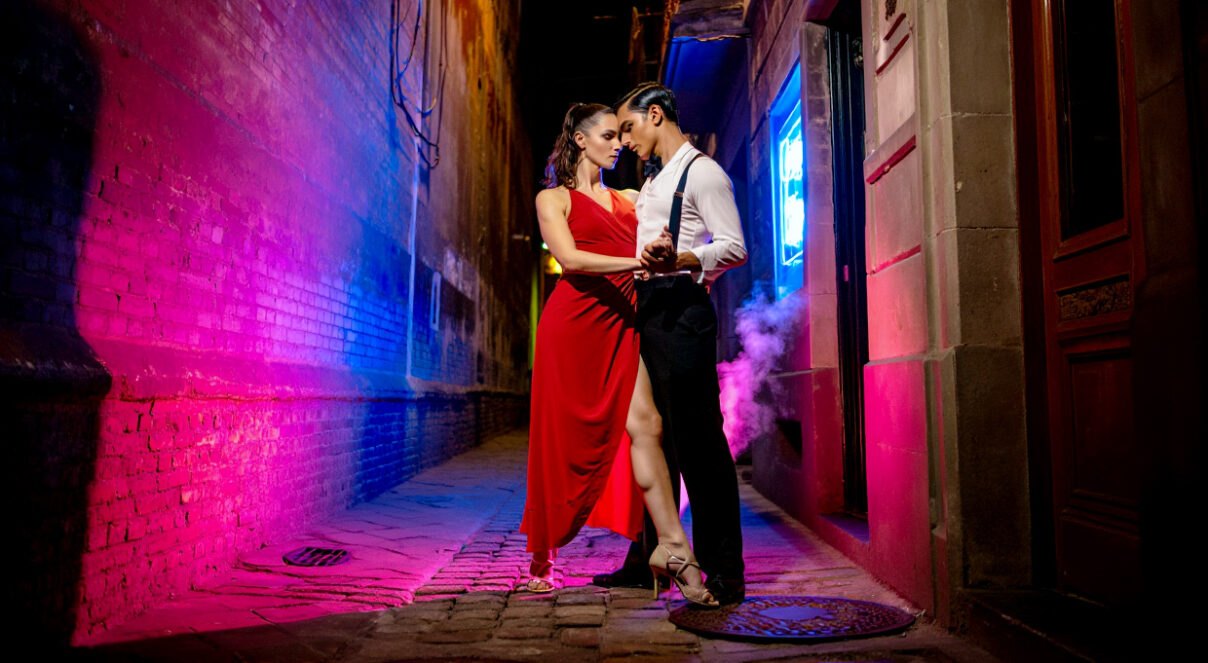
Tango (Argentina)
Tango originated in the working-class neighborhoods of Buenos Aires during the late 19th century, developing as a fusion of African, Native American, and European influences. Key features include:
- Close Embrace: Partners maintain an intimate physical connection for non-verbal communication
- Dramatic Footwork: Intricate and dynamic movements ranging from swift steps to deliberate motions
- Musicality: Closely follows traditional tango music featuring bandoneón, violins, and piano
Tango is more than just a dance; it’s a haunting conversation between partners played out in close embrace on dance floors worldwide.
Tinikling (Philippines)
Tinikling is a traditional dance from the Philippines that showcases the beauty of rural life and farming activities. Its name comes from the word “Tikling,” which refers to a bird known for its quick movements. The dance imitates the nimbleness and elegance of these birds as they maneuver through bamboo traps set by farmers to safeguard their rice crops.
Origin and Story
Tinikling has its roots in the Spanish colonial period in the Philippines. It is believed that farmers created this dance as a way to entertain themselves after long hours of working in the rice fields. The dance features two individuals rhythmically striking, tapping, and sliding bamboo poles on the ground while coordinating with dancers who gracefully step over and between the poles.
Key Elements and Techniques
- Bamboo Coordination: Two people control the bamboo poles, creating rhythmic patterns that dancers must navigate
- Agility Requirements: Mastering Tinikling demands exceptional agility and coordination skills
- Quick Movements: Dancers must move quickly and accurately to avoid being caught between the swiftly clapping poles
- Accelerating Tempo: The tempo of the bamboo poles often increases, posing a challenge for dancers to match their intricate footwork with the accelerating rhythm
Cultural Significance and Symbolism
Tinikling represents more than just a performance; it embodies the resilience and adaptability of Filipinos. It symbolizes how Filipinos navigate through life’s obstacles with poise and determination, much like the tikling birds maneuvering through bamboo traps.
This dance also serves as a tribute to community spirit, frequently showcased during festivals and local gatherings, promoting unity among participants. The dance connects modern Filipinos to their agricultural heritage while celebrating the ingenuity and creativity of rural communities.
Tinikling remains a powerful symbol of Filipino culture, representing both historical heritage and modern expression. The dance is still taught in schools across the Philippines and Filipino communities worldwide, ensuring that this vibrant tradition lives on for future generations.
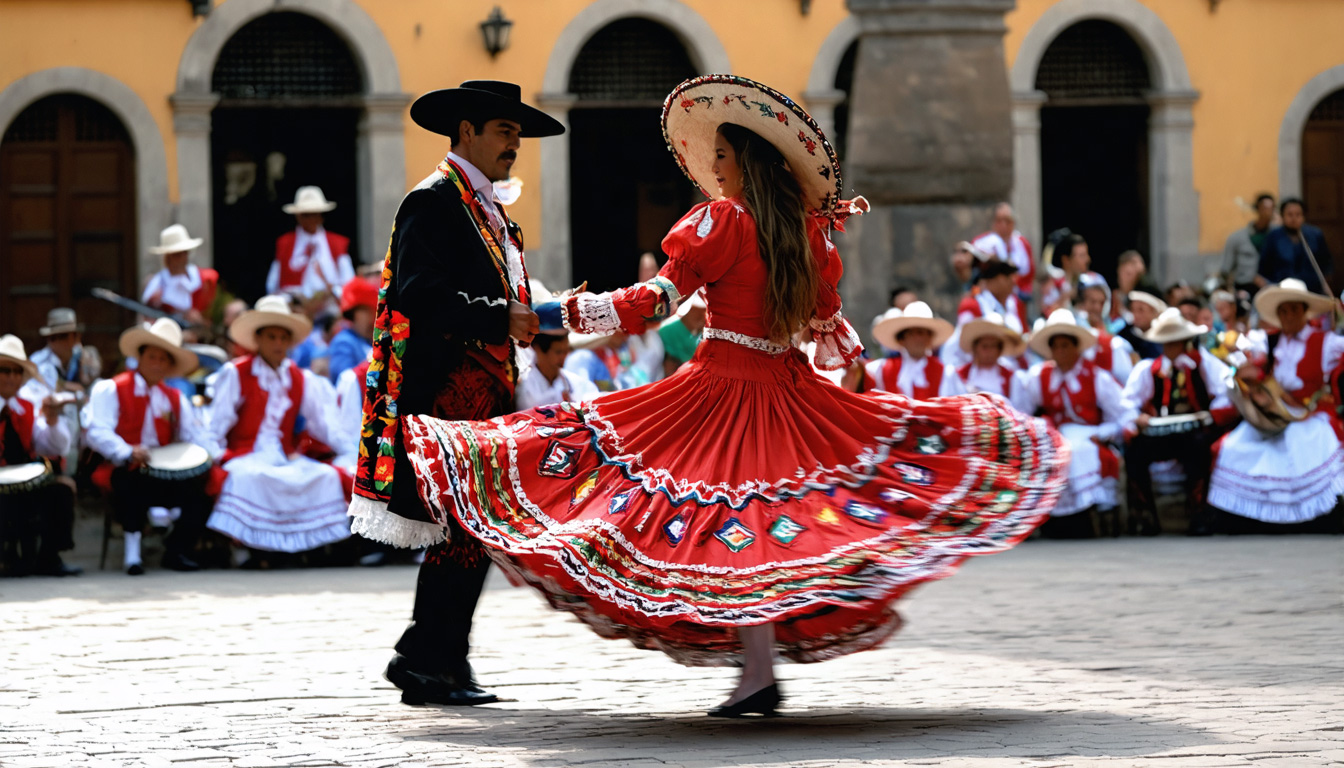
Mexican Jarabe Tapatío – Hat Dance (Mexico)
The Jarabe Tapatío, commonly known as the Mexican Hat Dance, is Mexico’s national dance and one of the most recognizable folk dances in the world. This courtship dance tells the story of a man wooing a woman through movement:
- Symbolic Courtship: The male dancer places his sombrero on the ground, and the female dancer dances around it
- Regional Costumes: Women wear colorful China Poblana dresses, men don charro suits
- Musical Accompaniment: Performed to mariachi music with distinctive rhythmic patterns
- Cultural Pride: Represents Mexican identity and is performed at national celebrations
The dance culminates when the woman picks up the hat and places it on her head, symbolizing acceptance of the courtship. This tradition embodies Mexican values of romance, respect, and cultural heritage.
Capoeira (Brazil)
Capoeira is a unique Afro-Brazilian art form that seamlessly blends martial arts, dance, acrobatics, and music. Developed by enslaved Africans in Brazil, it served as both cultural preservation and disguised combat training:
- Ginga: The fundamental swaying movement that forms the base of all capoeira
- Roda: The circle formation where capoeiristas perform while others play instruments and sing
- Berimbau: The musical bow that leads the rhythm and energy of the session
- Philosophy: Emphasizes non-violence, creativity, and community building
Capoeira represents resistance, freedom, and the power of cultural adaptation, making it both a UNESCO-recognized cultural heritage and a global phenomenon.
Peruvian Marinera
The Marinera is Peru’s national dance, evoking courtship through flirtatious movements and elegant choreography:
- Courtship Theme: The dance tells the story of romantic pursuit and seduction
- Handkerchief Props: Dancers use handkerchiefs as expressive tools in their performance
- Period Costumes: Women wear flowing dresses, men don elegant hats and formal attire
- Regional Variations: Different styles exist across Peru’s coastal and highland regions
The Marinera showcases both competitors’ grace and charm, with period costumes adding historical flavor to this celebration of Peruvian romance and cultural heritage.
Cuban Salsa
Cuban Salsa flows from Cuba’s son music, meshing Afro-Cuban and Latin movements in fast, swirling patterns:
- Afro-Cuban Roots: Blends African rhythms with Spanish colonial influences
- Social Dance: Naturally encourages improvisation and partner interaction
- Musical Connection: Closely follows the complex rhythms of Cuban son and Salsa music
- Global Influence: Has spread worldwide, influencing Latin dance culture globally
Social by nature, Cuban Salsa invites improvisation and subtle interplay between leader and follower, creating an intimate yet energetic dance experience.
Jamaican Dancehall
Jamaican Dancehall is explosive, inventive, and sometimes provocative, wielding powerful influence on global pop choreography:
- Creative Innovation: Every season brings new moves created in Kingston’s dancehalls
- Cultural Expression: Reflects Jamaican urban culture and social commentary
- Global Impact: Influences international music videos and pop choreography
- Youth Movement: Primarily driven by young dancers and emerging artists
New moves are created right in the dancehalls of Kingston before spreading through music videos everywhere, making Dancehall a constantly evolving art form.
Square Dance (United States)
Square Dance is rooted in European group dances and adapted by American settlers, creating a distinctly American social experience:
- Called Instructions: A caller provides verbal directions for dance movements
- Group Patterns: Involves four couples arranged in a square formation
- Social Interaction: Emphasizes community building and lighthearted fun
- Western Heritage: Often accompanied by country music and western wear
Square dance represents the frontier spirit of American settlers, combining European traditions with New World innovation to create a uniquely American folk tradition.
Métis Jig (Canada)
The Métis Jig reflects Canada’s Indigenous and French roots, creating a unique cultural fusion:
- Cultural Fusion: Blends Indigenous and French Canadian traditions
- Fiddle Music: Often performed to traditional fiddle accompaniment
- Fast and Intricate: Features rapid, complex footwork patterns
- Regional Identity: Represents the distinct Métis culture of Canada
This dance shares qualities with Irish and Scottish stepdances but infuses distinct rhythms and steps that reflect the unique heritage of Canada’s Métis people.
Brazilian Samba
Whether at Rio Carnival or neighborhood parties, Samba brings together sultry hip isolations, rapid foot movements, and percussion-heavy music. Its roots trace back to African drumming circles, yet it’s deeply Brazilian in its exuberance and sense of freedom.
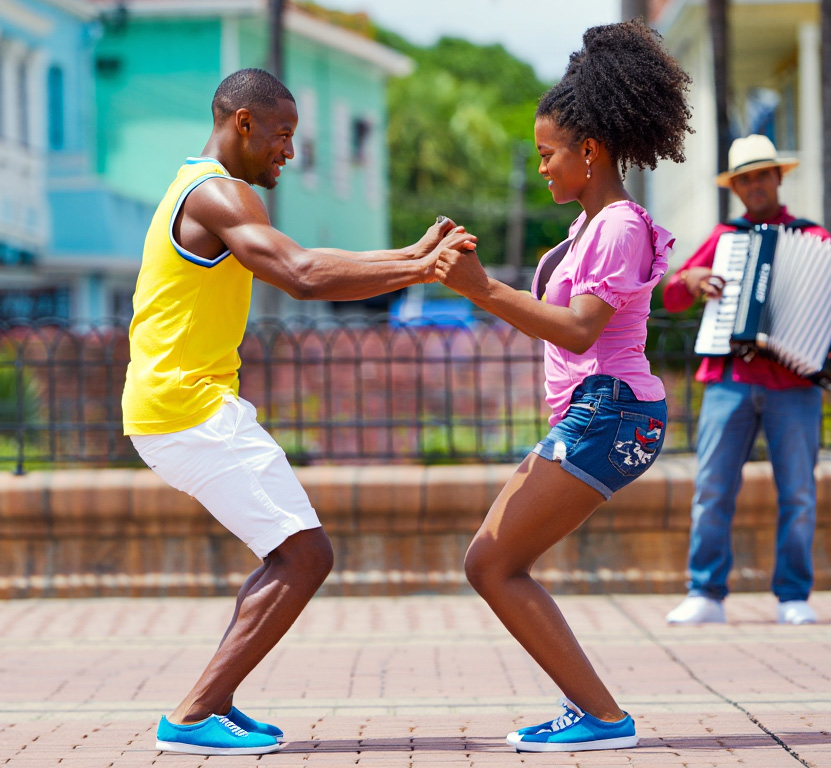
Merengue (Dominican Republic)
The two-step paso de la empalizada drives dancers’ hips in joyous rotation, propelled by güira rasp, tambora drum, and accordion. Born in rural fields and town plazas, Merengue now fuels ballroom floors worldwide while remaining the heartbeat of Dominican national identity.
Bomba & Plena (Puerto Rico)
Bomba barrels answer dancers’ improvised hip hits in a call-and-response dialogue that dates to enslaved West Africans on the island’s sugar plantations. Plena, often called “el periódico cantado” (the sung newspaper), uses frame drums and accordion to relay community news and social commentary—turning every street corner into a vibrant newsroom of rhythm.
Cumbia (Colombia)
Couples circle clockwise while women swirl lamp-lit skirts and men hold cigarettes or candles, recalling Afro-Indigenous courtship on the Magdalena River. Today, Cumbia’s 2/4 shuffle underpins countless Latin pop hits, yet the traditional gaita flutes and alegre drums still echo Colombia’s coastal nights.
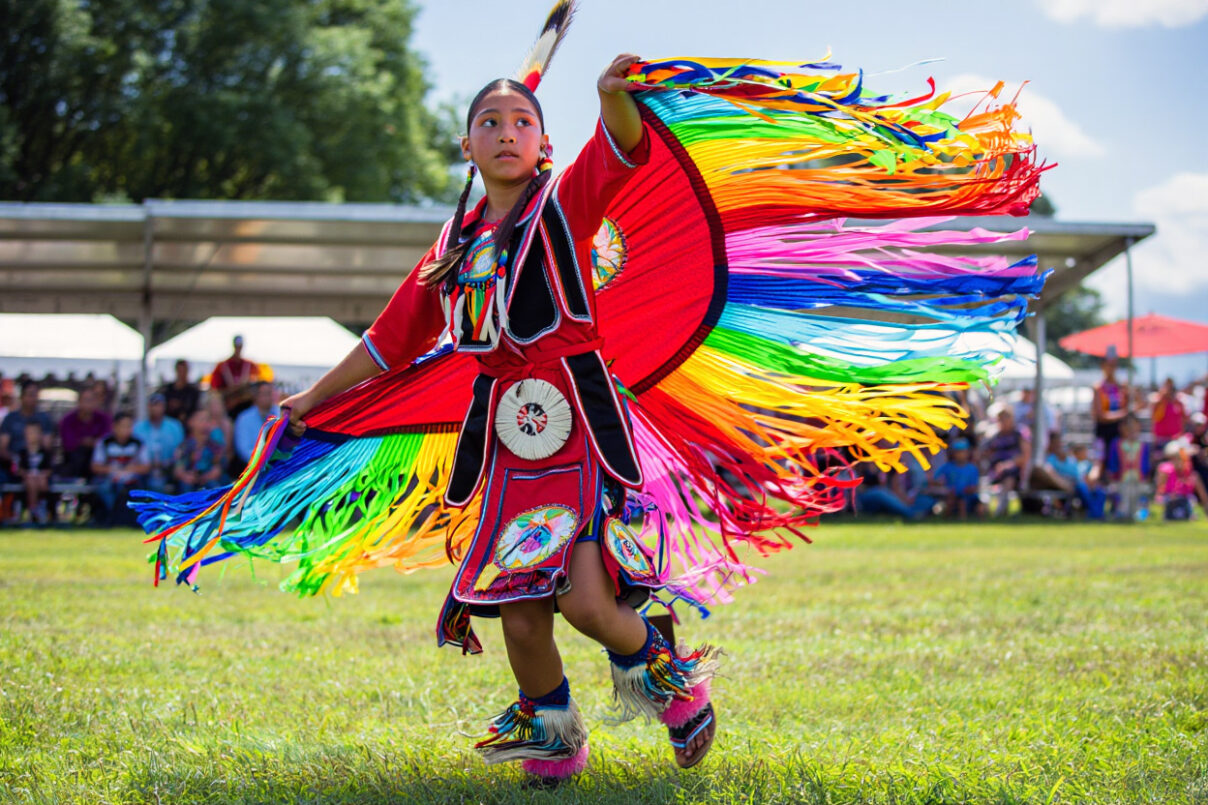
Powwow Fancy Shawl & Jingle Dress (Indigenous North America)
At modern powwows, Fancy Shawl dancers spin in bright fringed shawls that flutter like butterfly wings—symbolising transformation—while Jingle Dress dancers step-heal to shake hundreds of metal cones that “sing” like falling rain. Both dances are considered healing gifts received in dreams and remain powerful affirmations of Indigenous resilience across Turtle Island.
Oceanic & Pacific Dance Culture
Far across the Pacific, dance is tightly bound to land and ancestry. Movements recount creation myths, battles, and profound respect for nature.

Haka (New Zealand)
Perhaps the most famous of Māori dances, the Haka is performed with powerful stamping, rhythmically shouted words, and fierce facial expressions. Traditionally used to intimidate enemies and rally warriors, today it serves a broader purpose, from welcoming dignitaries to sports competitions.
Hula (Hawaii)
Early hulas shared oral history and spiritual teachings through measured, flowing movements of the hips, arms, and hands. Accompanied by chants or songs, hula continues to represent Hawaiian identity and pride, continually adapted and revived in modern times.
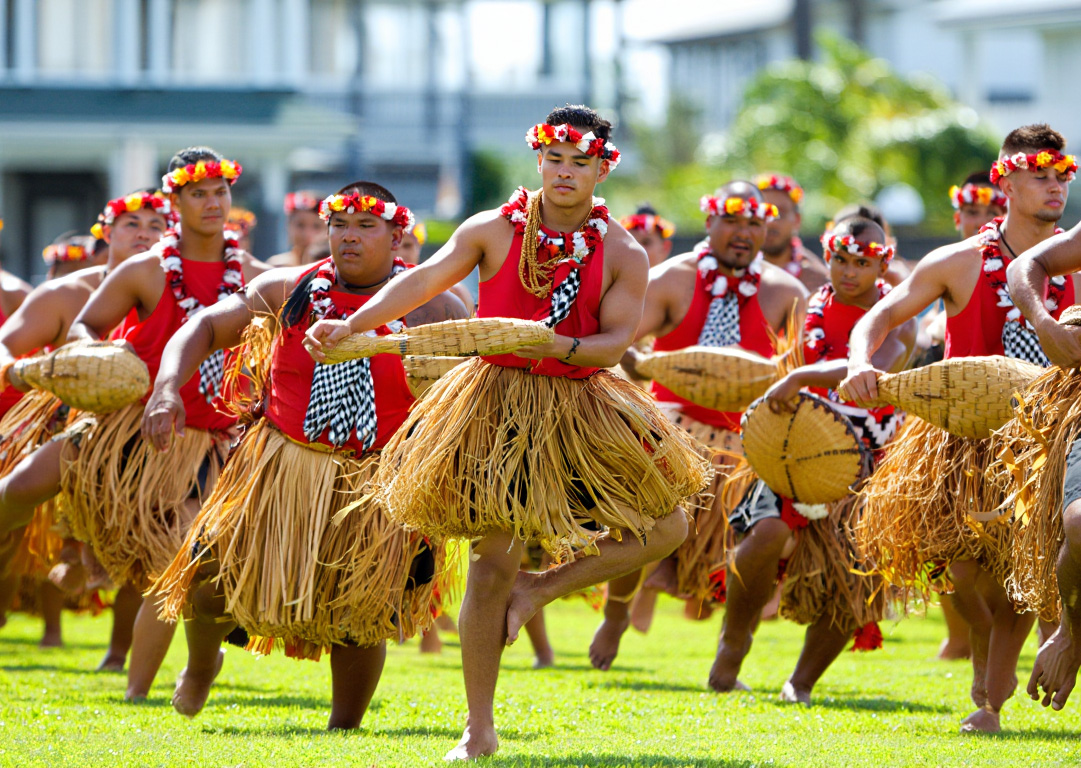
Lakalaka (Tonga)
Dubbed Tonga’s “national dance,” Lakalaka assembles hundreds of singers and dancers in serried ranks. Arms slice the air in precise unison while poetic chants praise chiefs, genealogy, and national history.
Siva Samoa
Graceful palm rolls and storytelling hand motifs pay homage to voyaging, village life, and the natural world. Humorous fa’ataupati slap-dances often follow, turning the gathering into an exuberant celebration.
Meke (Fiji)
Men brandish spears or clubs; women wave ornate fans. Together, they narrate battles, harvests, and legends in a hybrid of dance, song, and theatre that still electrifies Fijian festivals.
‘Ura (Cook Islands) & ‘Ote‘a (Tahiti)
Pareu-clad dancers unleash rapid hip shakes to the thunder of slit drums (pahu). Flower garlands, shell belts, and layered skirts turn every movement into a dazzling blur of colour and percussion.
Corroboree (First Nations Australia)
Ochre-painted dancers map Dreamtime songlines with stamping feet, clapsticks, and didgeridoo drones. Each Corroboree recounts creation stories, hunting lore, and custodianship of country—sacred knowledge shared through motion.
Modern and Contemporary Dance Forms
While traditional dances preserve ancient heritage, modern dance forms reflect contemporary culture, social movements, and artistic innovation. These styles often blend traditional elements with current trends, creating new forms of expression.
Line Dancing (United States)
Line dancing emerged from American folk traditions and gained massive popularity in country-western culture. This social dance form features:
- Synchronized Choreography: Groups perform identical steps in lines without partners
- Accessible Format: Dancers of all skill levels can participate together
- Country Music Connection: Often performed to country, pop, and rock music
- Social Bonding: Creates community through shared movement and music
Popular line dances like the “Electric Slide,” “Cupid Shuffle,” and “Cha-Cha Slide” have become staples at weddings, parties, and social gatherings worldwide, demonstrating how modern dances can unite people across cultural boundaries.
Pole Dancing (Global Contemporary)
Originally rooted in ancient traditions from India (Mallakhamb) and China, modern pole dancing has evolved into a recognized fitness discipline and artistic expression:
- Athletic Artistry: Combines strength training, flexibility, and creative choreography
- Fitness Revolution: Recognized as a legitimate exercise promoting core strength and coordination
- Artistic Expression: Incorporates elements from ballet, jazz, and contemporary dance
- Competitive Sport: Features organized competitions with technical and artistic categories
Pole dancing has transformed from its controversial associations to become a respected form of fitness and artistic expression, with studios worldwide teaching it as both exercise and art form.
Street Dance USA (Hip-Hop Culture)
Street dance encompasses various styles that emerged from urban American communities, particularly in New York City during the 1970s:
Breaking (Breakdancing)
- Foundation: Toprock, downrock, power moves, and freezes
- Cultural Roots: Born in the Bronx as part of hip-hop culture
- Athletic Demands: Requires strength, agility, and creativity
- Global Spread: Now practiced worldwide with international competitions
Popping and Locking
- Popping: Sharp muscle contractions creating robotic movements
- Locking: Funky dance with distinctive “locks” or pauses
- West Coast Origins: Developed in California’s funk scene
- Television Influence: Popularized through shows and music videos
House Dance
- Chicago Roots: Emerged from Chicago’s house music scene
- Footwork Focus: Emphasizes intricate foot patterns and floor work
- Musical Connection: Dancers interpret house music’s electronic beats
- Underground Culture: Maintains strong ties to club and rave scenes
K-Pop Cover Dance (South Korea)
Fueled by YouTube “dance practice” videos, fans across every continent learn and replicate the exact choreography of K-Pop idol groups—then film their own covers in public flash-mobs or studio showcases. The phenomenon has turned Seoul’s commercial routines into a participatory global folk dance, blending razor-sharp synchronicity with personal flair while amplifying South Korea’s cultural reach.
Folk Dance Traditions Worldwide
Folk dances represent the grassroots cultural expressions of communities, often passed down through generations without formal documentation:
European Folk Traditions
- Morris Dancing (England): Ritual folk dance with bells, sticks, and handkerchiefs
- Polka (Central Europe): Lively partner dance in 2/4 time
- Tarantella (Italy): Fast-paced dance traditionally believed to cure spider bites
- Csárdás (Hungary): Dramatic dance alternating between slow and fast sections
American Folk Traditions
- Square Dancing: Social dance with called instructions and four-couple sets
- Contra Dancing: New England tradition with long lines of couples
- Appalachian Clogging: Percussive dance from mountain communities
- Native American Powwow Dances: Sacred and social dances varying by tribe
Global Folk Expressions
- Bhangra (Punjab): Energetic harvest dance now popular worldwide
- Sirtaki (Greece): Modern folk dance combining traditional elements
- Dabke (Levant): Line dance expressing unity and celebration
- Cumbia (Colombia): Coastal folk dance with African and indigenous influences
Folk dances serve as living repositories of cultural memory, preserving stories, values, and community bonds while adapting to contemporary contexts.
The Evolution of Dance in the Modern World
As bound by tradition as many dances are, change is constant. Global travel, new media, and migration mean that steps and styles flow between communities as never before. Dance is a living, breathing expression of identity, and for communities scattered by migration or war, keeping their steps alive often becomes an act of preserving roots and resistance to being erased.
Global Trends Reshaping the Dance Landscape
Several significant trends are transforming how traditional dances evolve and spread:
Fusion Styles
Dance companies, social dancers, and choreographers often mix cultural styles, creating hybrid forms and sparking new traditions. Think of modern Bollywood blending Indian classics with hip-hop, or contemporary ballet incorporating elements of African or street dance. These fusion styles create bridges between cultures while honoring traditional roots.
Digital Exchanges
Social media platforms such as TikTok and YouTube spread both old and new dance moves across continents in seconds. Traditional dances are being rediscovered and reinvented as young dancers put their own twist on age-old steps. This digital revolution has democratized dance education and cultural exchange.
Competitive Dance
Across the world, local dances are moving onto global stages, from Ireland’s All-Ireland competitions to Japan’s World Cosplay Summit, where even traditional movements find unexpected new audiences. International dance competitions celebrate both technical excellence and cultural authenticity.
Keeping Traditions Alive and Open
So much more than mere entertainment, dances across the world remain central to community identity, historical consciousness, and creative renewal. From sacred rituals on volcanic islands to packed urban dance clubs pulsing with the newest hybrid beats, the world’s dances reveal humanity’s urge to move, remember, and connect.
Whether perfected over centuries or improvised on the spot, each step is a living echo from those who came before—and a gift to those who will follow. Traditional dances continue to serve as powerful repositories of collective memory, methods of social cohesion, and vehicles for transmitting cultural values to new generations.
Traditional dances provide a window into the soul of cultures worldwide. They not only entertain but also play a crucial role in maintaining cultural identity and strengthening community bonds. Through these explorations of movement and music, we discover how dance serves as both a preservation of heritage and a celebration of human creativity across all corners of our diverse world.
Frequently Asked Questions About Traditional Dances
What are traditional dances, and why are they important?
Traditional dances are cultural art forms passed down through generations that express the history, values, and identity of specific communities or nations. They are important because they preserve cultural heritage, strengthen community bonds, and serve as living repositories of historical knowledge and social customs.
Which traditional dance is the most popular worldwide?
While popularity varies by region, some of the most internationally recognized traditional dances include Spanish Flamenco, Argentine Tango, Irish Stepdance, and Hawaiian Hula. These dances have gained global recognition through cultural exchange, tourism, and media representation.
How do traditional dances differ from modern dance forms?
Traditional dances are rooted in specific cultural contexts and have been preserved over centuries with established techniques, costumes, and meanings. Modern dance forms often blend multiple influences, emphasize individual expression, and evolve more rapidly through contemporary influences and technology.
Can anyone learn traditional dances from other cultures?
Yes, most traditional dances can be learned by people from different cultural backgrounds. However, it’s important to approach them with respect, understanding their cultural significance, and learning from qualified instructors who can teach proper techniques and cultural context.
What role do costumes play in traditional dances?
Costumes in traditional dances are integral to the performance, often carrying deep symbolic meaning. They may represent social status, tell stories, honor deities, or connect dancers to their ancestors. Colors, patterns, and accessories all contribute to the dance’s cultural narrative.
How are traditional dances being preserved in the modern world?
Traditional dances are preserved through formal education programs, cultural institutions, festivals, competitions, and digital documentation. Many communities also pass them down through family traditions and community celebrations, while modern technology helps record and share these art forms globally.
What is the oldest traditional dance still performed today?
While it’s difficult to determine the absolute oldest, some of the most ancient dance traditions still practiced include Indian classical dances like Bharatanatyam (over 2,000 years old), Chinese classical dance (5,000+ years), and various African tribal dances that have been performed for millennia.
How do traditional dances contribute to physical and mental health?
Traditional dances provide excellent physical exercise, improving cardiovascular health, flexibility, coordination, and strength. Mentally, they offer stress relief, cultural connection, social interaction, and cognitive benefits through learning complex movements and patterns.
Are traditional dances still evolving, or are they fixed in time?
While traditional dances maintain their core elements and cultural significance, they do evolve subtly over time. New interpretations, fusion styles, and adaptations for modern audiences help keep these art forms alive and relevant while respecting their traditional roots.
How can I find traditional dance classes in my area?
Look for cultural centers, dance studios, universities with cultural programs, community colleges, and ethnic organizations in your area. Many cities also have international dance festivals or cultural events where you can discover different traditional dance forms and connect with instructors.
How many traditional dances are there in the world?
No one has an exact number. UNESCO’s Intangible Cultural Heritage list includes 160-plus dance traditions, but that registry only scratches the surface. Ethnochoreologists estimate several thousand distinct styles when you count village-specific rituals, regional variations, and community dances that have never been formally documented. Because dances evolve whenever cultures migrate or blend, the global total is constantly in flux—new hybrids appear even as older forms are rediscovered and revived. In short, traditional dance is a living, growing forest of movement rather than a fixed catalog.
Sources and References
This comprehensive guide draws from authoritative sources and expert knowledge in the field of traditional dance and cultural anthropology:
Academic and Cultural Sources
- UNESCO Intangible Cultural Heritage Lists and Documentation
- Smithsonian Center for Folklife and Cultural Heritage
- Library of Congress American Folklife Center
- International Council of Museums (ICOM) Cultural Heritage Documentation
- National Geographic Society Cultural Preservation Archives
Expert Consultations
- Dr. Joann Keali’inohomoku, Anthropologist and Dance Ethnologist
- Donn Pohren, Flamenco Historian and Author
- Martha Graham Dance Company Archives
- Royal Academy of Dance Historical Documentation
- International Association of Dance Medicine & Science
Cultural Institution References
- Bolshoi Theatre Ballet Academy (Russian Dance Traditions)
- Beijing Dance Academy (Chinese Classical Dance)
- Kalakshetra Foundation (Indian Classical Dance)
- Irish Traditional Music Archive
- Smithsonian Folkways Recordings
Field Research and Documentation
Our editorial team has conducted extensive field research, including:
- Attendance at traditional dance festivals across six continents
- Interviews with master practitioners and cultural keepers
- Documentation of dance preservation efforts in indigenous communities
- Collaboration with cultural centers and dance academies worldwide
This article is regularly updated to reflect the latest research in dance anthropology and cultural preservation. Last fact-check completed: August 2025.
While every effort has been made to ensure accuracy, traditional dances are living art forms that may vary between regions and communities. We encourage readers to seek instruction from qualified cultural practitioners when learning these dance forms.
